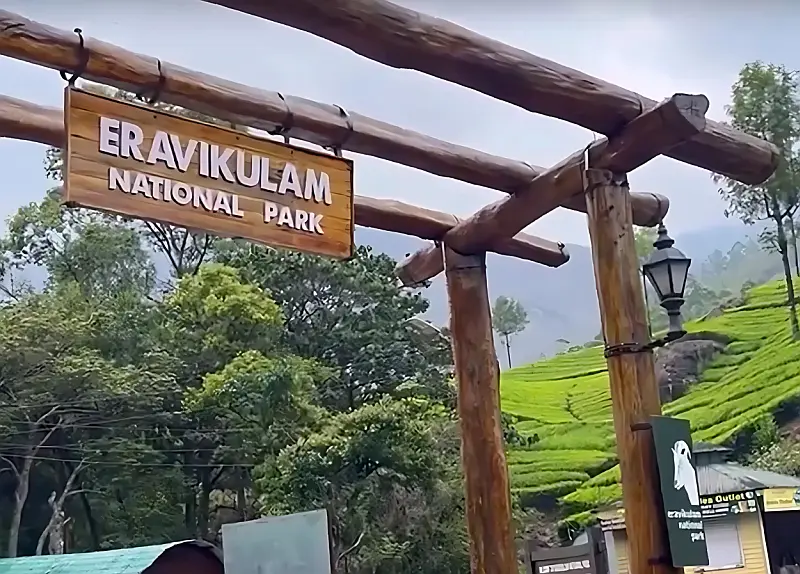Eravikulam National Park: A Gem of Biodiversity in Munnar

Eravikulam National Park is located 15 km from Munnar town.
Nestled in the enchanting hills of Munnar, Eravikulam National Park is a sanctuary like no other. This verdant expanse, covering an area of 97 square kilometers, is famed for its rolling grasslands, dense sholas, and an incredible variety of flora and fauna. For nature lovers, trekking enthusiasts, and anyone seeking a glimpse into India's rich biodiversity, Eravikulam National Park is a must-visit.
Home to the Endangered Nilgiri Tahr
One of the park's most celebrated residents is the Nilgiri Tahr, a rare and endangered mountain goat that roams the steep slopes with agile ease. Watching these majestic creatures navigate the rugged terrain is a sight to behold and a reminder of the park's critical role in protecting this species. Conservation efforts have been crucial, and the park's population of Nilgiri Tahr is one of the largest in the world.
The Neelakurinji Phenomenon
Eravikulam National Park becomes an even more magical place during the blooming season of the Neelakurinji flowers. This rare botanical event occurs only once every 12 years, transforming the rolling hills into a sea of blue and purple. Visitors flock from around the globe to witness this stunning natural spectacle, which last occurred in 2018 and is anticipated to bloom again in 2030.
A Biodiversity Hotspot
The park is not just about its iconic residents. It is home to a variety of wildlife, including leopards, Indian muntjacs, and over 140 species of birds. Birdwatchers can delight in sightings of the Black-and-orange Flycatcher, Nilgiri Wood Pigeon, and the White-bellied Shortwing, to name a few. The park's ecosystem also supports numerous butterflies and other insects, adding to its status as a biodiversity hotspot.
Exploring the Park
Visitors to Eravikulam National Park can enjoy guided treks that offer breathtaking views of the Western Ghats. The popular Anamudi Peak, the tallest mountain in South India at 2,695 meters, lies within the park boundaries, drawing avid trekkers to its challenging trails. While access to the peak itself is restricted for conservation reasons, the surrounding trails offer stunning panoramic views that make the hike worthwhile.
For those who prefer a more relaxed experience, the park's eco-friendly shuttle service takes guests through some of the most scenic parts of the reserve, allowing them to immerse themselves in the park's natural beauty without disturbing the wildlife.
Best Time to Visit
The best time to visit Eravikulam National Park is between September and March, when the weather is cool and the landscape lush. The monsoon season, although beautiful, can make trails slippery and less accessible. Early mornings and late afternoons are ideal for those hoping to spot wildlife.
Important Visitor Information
The park is well-regulated to ensure the safety and preservation of its flora and fauna. Entry tickets can be booked online to avoid long queues, especially during peak tourist seasons. Visitors should remember that certain areas within the park may be off-limits to maintain the integrity of its natural habitat.
Important Tips for Visitors
Plan Your Visit: Check the park's official website for any updates on opening times and specific regulations before you go.
Dress Appropriately: Wear sturdy shoes suitable for trekking as some trails can be steep and uneven.
Stay Hydrated: Carry enough water while trekking to stay hydrated during your explorations.
Respect Wildlife: Maintain a safe distance from animals and do not feed them to preserve their natural behavior.
Why Visit Eravikulam National Park?
Whether you're captivated by the wildlife, the vibrant carpet of Neelakurinji flowers, or the allure of mist-covered hills, Eravikulam National Park offers a slice of paradise that is both awe-inspiring and deeply humbling. This Munnar treasure invites every visitor to appreciate the delicate balance of nature and the importance of preserving such pristine ecosystems for future generations.
